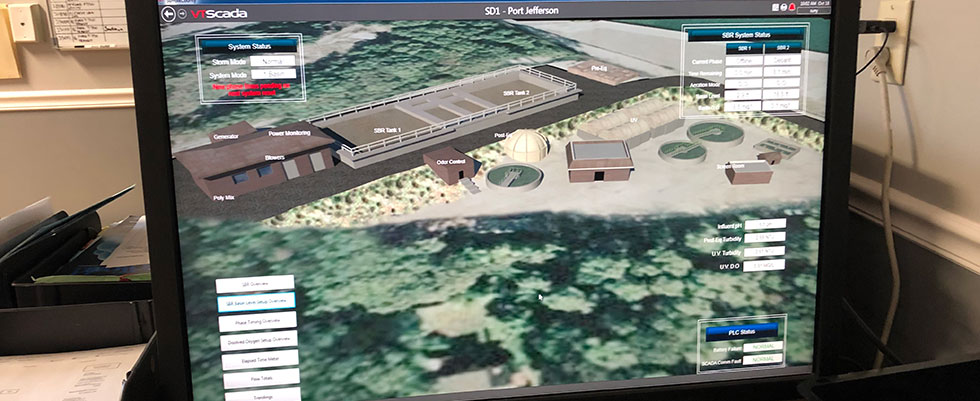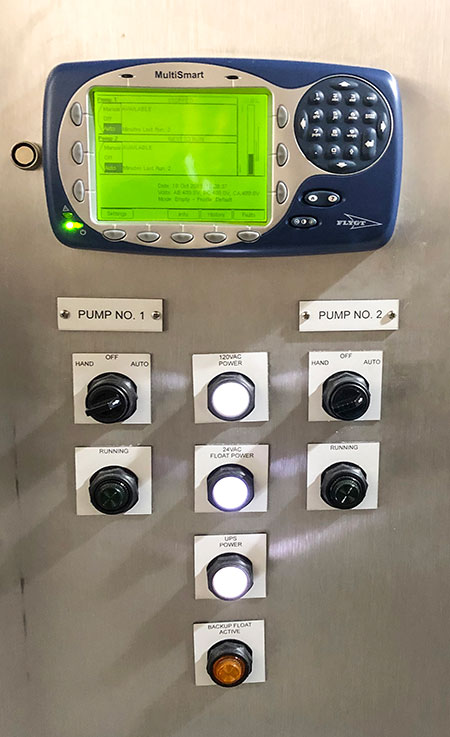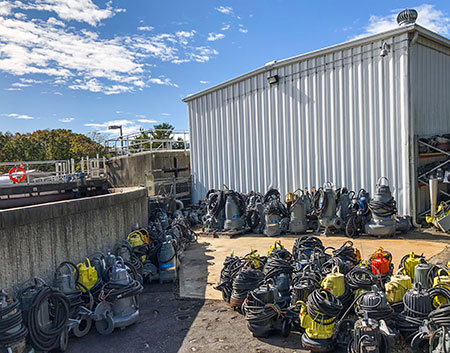
The Suffolk County Department of Public Works (DPW) in Long Island, New York, boasts 26 sewage treatment plants and sewer districts, over 80 pumping stations and more than 1,250 miles of sewers. The treatment plants range in size from 3,500 gallons per day up to 30.5 million gallons per day.
Suffolk County sought to upgrade its supervisory control and data acquisition (SCADA) system in an effort to leverage smart technology and data analytics to optimize processes and lower operating costs. The upgrade would employ automation and controls to more effectively manage the agency’s manpower, proactively maintain assets and optimize energy and performance by gaining better visibility into, and control of, critical water and wastewater operations.
The Challenge
With such a large district to manage, Suffolk County DPW needed an upgraded SCADA system to manage assets remotely more effectively and reduce the constant need for staff in the field. Before the upgrade, staff often spent up to four hours traveling to and from a single site to respond to nuisance callouts. Also, technicians were physically checking pump stations every day to ensure equipment was operating properly. With more than 80 pump stations, the extra manpower added more than $180,000 per year in labor costs.
The Suffolk County DPW management team recognized the need for a more effective SCADA system. In addition to reducing labor costs, the utility also wanted the ability to manage their sewer system more proactively and better assess their inventory in order to repair or replace equipment more quickly. Suffolk County turned to a local distributor that could pair their mechanical equipment with an automation and control solution.
The Solution
The Suffolk County DPW opted to implement a new generation of SCADA system technology—a decision that was based on the positive results the utility experienced with its existing SCADA setup. Previous success with the original SCADA install enabled the utility to manage the flows and peaks of its collection system in real time during Superstorm Sandy in 2012. Suffolk County expertly used the strength of the next generation SCADA tool to remotely monitor their lift stations and field assets during Superstorm Sandy so they could proactively make system corrections to ensure there were no wastewater spills. The ability to leverage real-time data and analytics from the SCADA system during severe weather events represents a major cost avoidance for Suffolk County and demonstrates the utility’s environmental stewardship.

Along with the SCADA system, the Suffolk County DPW installed pump station managers (iPSM) to simplify its waste and sewage water management processes. For Suffolk County, the iPSMs provided a sophisticated technology that could collect data and alarm control system alerts from their stations and prioritize issues that require a technician callout. Additionally, the intelligent controller monitors and calculates power usage in real time. This enables the utility’s operators to identify and control any inefficiencies by leveraging the most efficient pump and reducing overall power consumption in the facility.
The Result
The implementation of a more effective remote monitoring system has enabled Suffolk County DPW personnel to recognize the true priority of an alarm. Now, rather than sending staff to remote locations to collect data and monitor the wastewater system, the Suffolk County DPW can track, manage, report, archive and control equipment and settings from a central location. The new SCADA system not only informs operators of existing issues, but more importantly, it alerts the team to future situations, enabling the utility to take preventive action and avoid previously unforeseen expenses.
Enhanced remote monitoring technology also reduced the utility’s need for technicians to physically check pump stations, cutting their visits from once per day to once per week. At a cost of $50 per hour to dispatch a technician to each pump station, Suffolk County is now saving $182,000 per year in labor costs.
With the iPSM, Suffolk County now can quickly diagnose, repair and, if necessary, replace equipment in the field. Rather than carrying a highly diverse set of controllers that would be difficult to train all of its technicians on, Suffolk County’s inventory now only consists of the implemented iPMS. By streamlining their inventory, the Suffolk County DPW realized a cost avoidance of $24,000 versus having multiple controllers on the shelf and associated training time.

Suffolk County also encountered the added challenge of having one of their lift stations experience a high frequency of clogging events. In response to this constant headache, the utility installed a wastewater pumping system with integrated intelligence system at its Stony Brook pump station in 2015, which showed positive results within a month of installation. Pump clogging was eliminated and it was no longer necessary to frequently check the rotation of the pump, saving them time and money. Previously, maintenance callouts to this lift station were as frequent as once every three months. Since the installation of this system, maintenance costs have been reduced by $4,100 per year. Additionally, the pump station has seen a reduction in energy consumption of 45% and has avoided $6,000 in pump replacement costs.
Once the monitoring and control system was fully commissioned, the Suffolk County DPW saw immediate results in the way of reduced costs, reduced overflows and improved asset management. The data collected on the iPSM is communicated throughout the entire system via the SCADA network.
With the help of smart automation and control technologies, the Suffolk County DPW now can actively monitor its operations and make real-time adjustments based on data-driven decisions to better serve the community.

